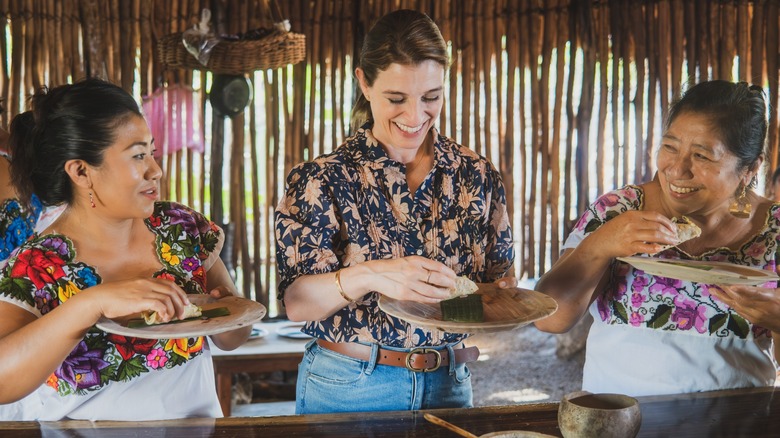How The Flavors Of Yucatán Are Different From The Rest Of Mexico According To Pati Jinich
Acclaimed television host and cookbook author Pati Jinich is perhaps best known for "Pati's Mexican Table", her James Beard Award-winning PBS series that travels to a different part of Mexico each season to celebrate the culinary and cultural specificities of the region. Season 12 ventures to the state of Yucatán, where Jinich communes with local residents to learn about the area's rich Mayan history and the cooking techniques there that have transcended generations.
In an exclusive interview with Tasting Table, Pati Jinich shared her experience traveling to Yucatán for the show, learning about how the region differs from other parts of Mexico, and how those differences influence the cuisine — especially all the unique flavors it brings to the table. "For this season, we went to Yucatán and dug deep into the Maya culture and the unique intersection that exists between the Maya world, which is so prevalent in Yucatán and different from the rest of Mexico, where there were the Aztec, the Totonac, the different Native Mexican tribes," she said. "In Yucatán, it's the Maya, so you see chiles that you don't see in other places like the xcatic, chili guero, and there's a predominant use of habanero, [which is] super feisty, colorful, and citrusy."
The produce and underground cooking methods of the region make for unique flavors
Around the world, culinary preparations vary deeply depending on regional ingredients, flavor pairings, and cultural practices. According to Pati Jinich, the flavors of Yucatán are intertwined with the region's Mayan heritage, which is evidenced in the vibrant produce and cooking methods. In addition to the unique chiles of the region, she said, "The oregano from Yucatán is much larger, more fragrant, and aromatic — it really smells like dried roses. It's much warmer than Mediterranean oregano, which is a little bit harsh and strong. It's also different from the Mexican oregano from Nuevo Leon, which is very woodsy."
One of the most beloved cooking practices in Yucatán is the method of preparing food underground. "The food from the Yucatán is very rustic, charred, and citrusy — with a lot of these flowery notes," Jinich explained. "The tamales in Yucatán are typically wrapped in banana leaves [instead of] corn husks, and there's a lot of use of recado rojo or achiote paste."
If you'd like to replicate the charred flavors in your own home, Jinich shared several culinary tips. "You can make a seasoning sauce by charring or roasting the ingredients and also by toasting the spices. Then, you add the cooked chicken, turkey, or pork, and you pretty much get a similar thing, which is rich, exciting, and delicious without having to dig an underground pit in your backyard."

